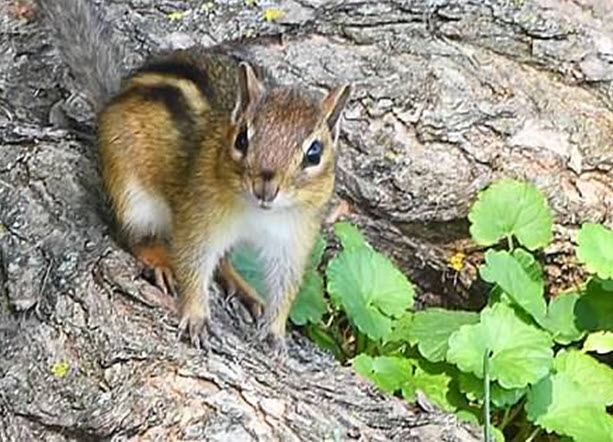
Rural Perspectives: Spunky eastern chipmunk builds its own den

by Diane Constable
The charming eastern chipmunk (Tamias striatus) lives in woodlands and is often found living near people. Loners by nature, each chipmunk builds its own personal den with multiple entries and drainage tunnels and separate places to store foods, sleep and take care of babies.
They have litters twice each year with the female doing all of the raising of the pups. After about 30 days, three to six jellybean-sized babies are born. The pups will stay in the den until they are about 6 weeks old and then will venture out on their own. They will reach a length of about 9 inches including a 3-inch tail, weigh about a pound, and live two to three years.
Although chipmunks are solitary, they often communicate with each other using a range of chips, chirps and whistles that often resemble bird sounds.
Chipmunks also build shallow escape tunnels near their feeding areas in order to hide quickly from predators. They eat seeds and nuts but also eat a variety of other foods such as insects, worms, flower buds, snails, fungi and mushrooms.
They have storage pouches in their cheeks that can hold up to 1.5 times the size of their head in each pouch. The pouches are used to remove dirt when they are building their tunnels, and to transport food to their dens where it is stored for winter feeding. Chipmunks go into a deep sleep, or stupor, in the cold months and use this cache to munch on when they occasionally wake up.
Fun Fact: Chipmunk feeding habits help disperse tree and plant seeds and mushroom spores—including the sought-after truffle mushrooms—which are dependent on the chipmunk to scatter their spores.




